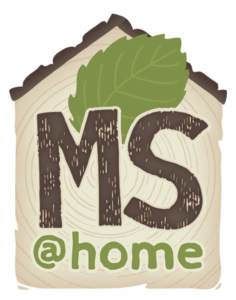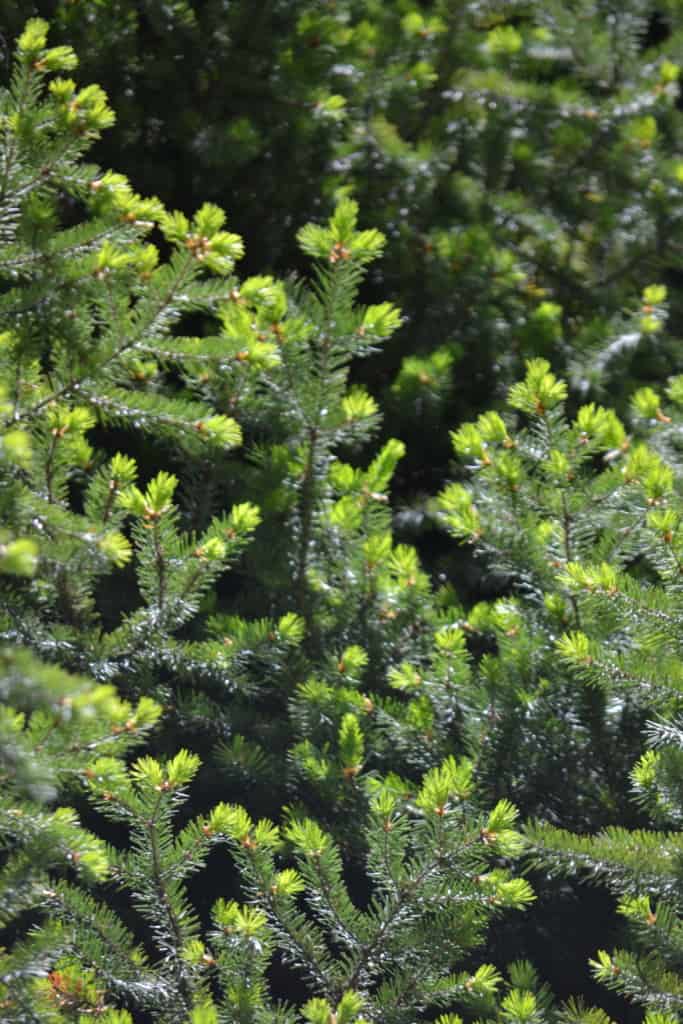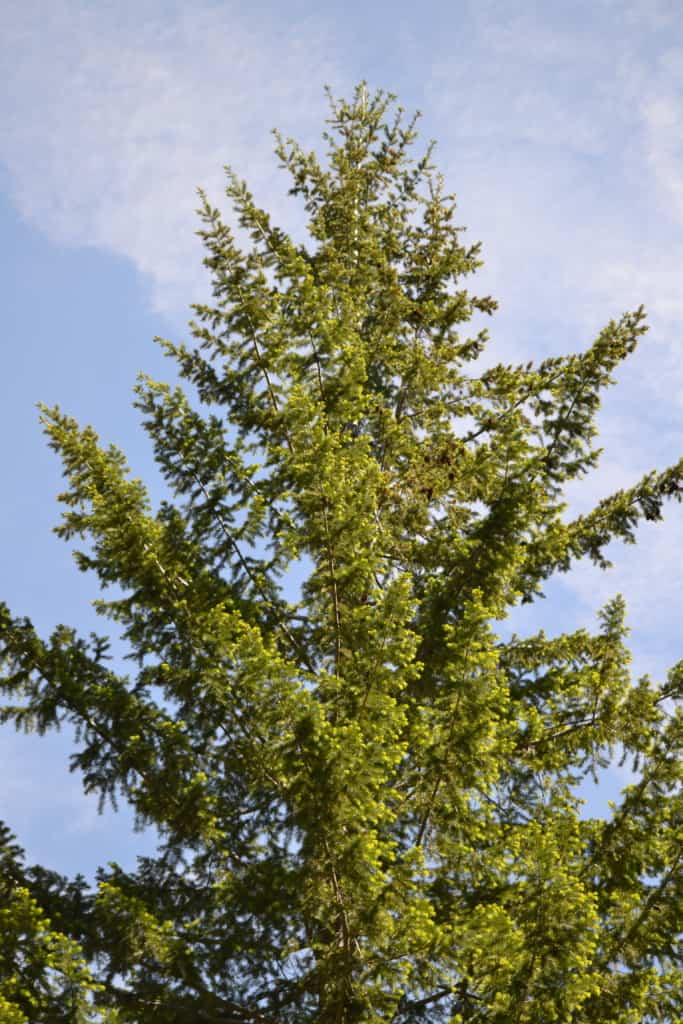
Mountain School @ Home Lesson 13: A Love Letter to the Douglas Fir
 Students! Parents! Teachers! During this time of school closures and stay-at-home guidelines, North Cascades Institute is sharing lessons and activities from our talented Mountain School instructors. We hope these will inspire students of all ages to continue to learn about the natural world and discover new connections to the outdoors from home. This lesson was created by Mountain School instructor Taylor Woolsey. Find more lessons and activities on our blog or website.
Students! Parents! Teachers! During this time of school closures and stay-at-home guidelines, North Cascades Institute is sharing lessons and activities from our talented Mountain School instructors. We hope these will inspire students of all ages to continue to learn about the natural world and discover new connections to the outdoors from home. This lesson was created by Mountain School instructor Taylor Woolsey. Find more lessons and activities on our blog or website.
A Love Letter to the Douglas Fir
If a Douglas Fir could talk
I imagine it would say a lot
Growing and watching over the years
A steady presence through joy and tears
Surviving fires and storms and snow
Branches heavy, hanging low
Thick bark and new growth tips in spring
Show what strength and patience can bring
Standing with others, young and old
Since before land could be bought or sold
What wisdom, Doug, can you share
To help us fleeting humans care?
—Taylor Woolsey
Dearest Douglas Fir,
I’ve always wondered, do you go by Doug? Do you prefer pseudotsuga menziesii, your given Western scientific name or čəbidac, from the indigenous Salish Lushootseed language? I try to think of how many other names you have been given throughout time, in languages that have been lost through the taking of indigenous land, or the melodies sung in your honor. Or perhaps at some point a child, wandering in little corners of the forest, whispered an unheard name meant for the two of you alone. Or maybe still you could care less about names, too wary of man’s tendency to name and then claim for the sake of greed and power. For now, anyway, I hope it is okay to just call you Doug.  From my rocky perch on Diobsud Creek in Marblemount, Washington, I see a sea of you. If I were closer, I would see the highlighter green tips of Spring’s new growth, visual evidence that you continue standing through time. Doug, how does it feel to know you have the capacity to live for a thousand years, if you don’t fall before then from causes other than old age? And by living so long, what have you seen? The prospect of counting centuries instead of years of life can be unsettling, or it can be amazing. Because every year I wait as the deep dark green of winter’s matured needles turn vibrant and new, and all of a sudden the world comes alive again and I have no room for fear.
From my rocky perch on Diobsud Creek in Marblemount, Washington, I see a sea of you. If I were closer, I would see the highlighter green tips of Spring’s new growth, visual evidence that you continue standing through time. Doug, how does it feel to know you have the capacity to live for a thousand years, if you don’t fall before then from causes other than old age? And by living so long, what have you seen? The prospect of counting centuries instead of years of life can be unsettling, or it can be amazing. Because every year I wait as the deep dark green of winter’s matured needles turn vibrant and new, and all of a sudden the world comes alive again and I have no room for fear.
Up ahead, the confluence of the Skagit River plays a white noise rock show in my ears, carving the land as it rushes by, and I think about the way this land has changed since the last Ice Age ended 14,000 years ago. What did this scene look like in those early centuries of growth, when your kind first appeared in the area along with first traces of humans? How has it changed? I hope, even though it looks different than before, you still find that the Pacific Northwest is a good home.
I must say, I am really glad you are no longer the only source of timber here—even though you are a great candidate (fast growing, strong). After overcutting and diseases, regrowing Douglas Fir as a single crop is no longer advised, so it gives me hope that you and your standing friends may be standing a little taller these days since those changes.
 Doug, I remember when I first made the Pacific Northwest my home and finally got to know you. I had seen thousands of you in my life but it wasn’t until three years ago that I learned a few of your intricacies. Intricacies like how your bark has deep grooves and is so thick (up to 12 inches) that it has the ability to survive small forest fires. Or how, despite what your common Western name “Douglas-fir” would suggest, you are not actually a true fir tree. It’s not your fault though, you didn’t name yourself. I hope you pay no mind to silly human words and instead be proud of yourself. Not only are you one of the biggest trees around, but you also provide so much to the creatures around you. Remind me, again, who lives in your community? Moss, ferns, other tree friends? Squirrels and birds scuttle around on and in you, munching on seeds. I also read that when bears eat the succulent layer on the inside of your bark, it wounds you when they pull the bark off the trunk. Though, despite threats of logging, insects, disease, and fire, I must say you truly are an inspiration in surviving through devastation or destruction. Even when you fall, you become a nurse log and provide life for decades later. It is an admirable strength you have.
Doug, I remember when I first made the Pacific Northwest my home and finally got to know you. I had seen thousands of you in my life but it wasn’t until three years ago that I learned a few of your intricacies. Intricacies like how your bark has deep grooves and is so thick (up to 12 inches) that it has the ability to survive small forest fires. Or how, despite what your common Western name “Douglas-fir” would suggest, you are not actually a true fir tree. It’s not your fault though, you didn’t name yourself. I hope you pay no mind to silly human words and instead be proud of yourself. Not only are you one of the biggest trees around, but you also provide so much to the creatures around you. Remind me, again, who lives in your community? Moss, ferns, other tree friends? Squirrels and birds scuttle around on and in you, munching on seeds. I also read that when bears eat the succulent layer on the inside of your bark, it wounds you when they pull the bark off the trunk. Though, despite threats of logging, insects, disease, and fire, I must say you truly are an inspiration in surviving through devastation or destruction. Even when you fall, you become a nurse log and provide life for decades later. It is an admirable strength you have.
One of the things I love most about you, Douglas Fir, is your cones. In the earlier days of my learning, I heard a legend about fire and mice and why your cones have what look like the hind legs and tail of a mouse from behind the scales. Is this a true story, Doug? Are there others who can tell your tale? With “mouse butts” swirling around in the back of my brain, I need only look to the forest floor to know if you hover above me.
Doug, you give a lot to your ecosystem, and that includes to the people who have noticed that you are something to be protected. You are a constant companion in Pacific Northwest forests, a sage chaperone, a place for a curious human to rest their head, or read a book, or examine pages of a field guide. You have helped me know trees, and therefore the forest, world, and my place in it. Please keep sharing yourself with us humans, I think we are finally opening our eyes again.
I love you, thank you.
Taylor
 Reflection activity:
Reflection activity:
- Shake a Douglas Fir’s “hand” (examine, feel, and wonder at the thick bark and deep grooves!)
- Write a love letter to something in nature, whether that is a tree, flower, body of water, or creature you know, love, or admire. If you could tell it anything, what would it be?
- Create your own story or comic strip about how the Doug Fir cone came to be (ex. How did the mice end up in the cones?)
- Lay on your back underneath a Douglas Fir, look up, and draw what you see.
Information sourced from: Natural History of the Pacific Northwest Mountains by Daniel Mathews
Thank you for helping us offer these at-home lessons for transformative learning experiences in nature by making a gift at www.ncascades.org/give.

